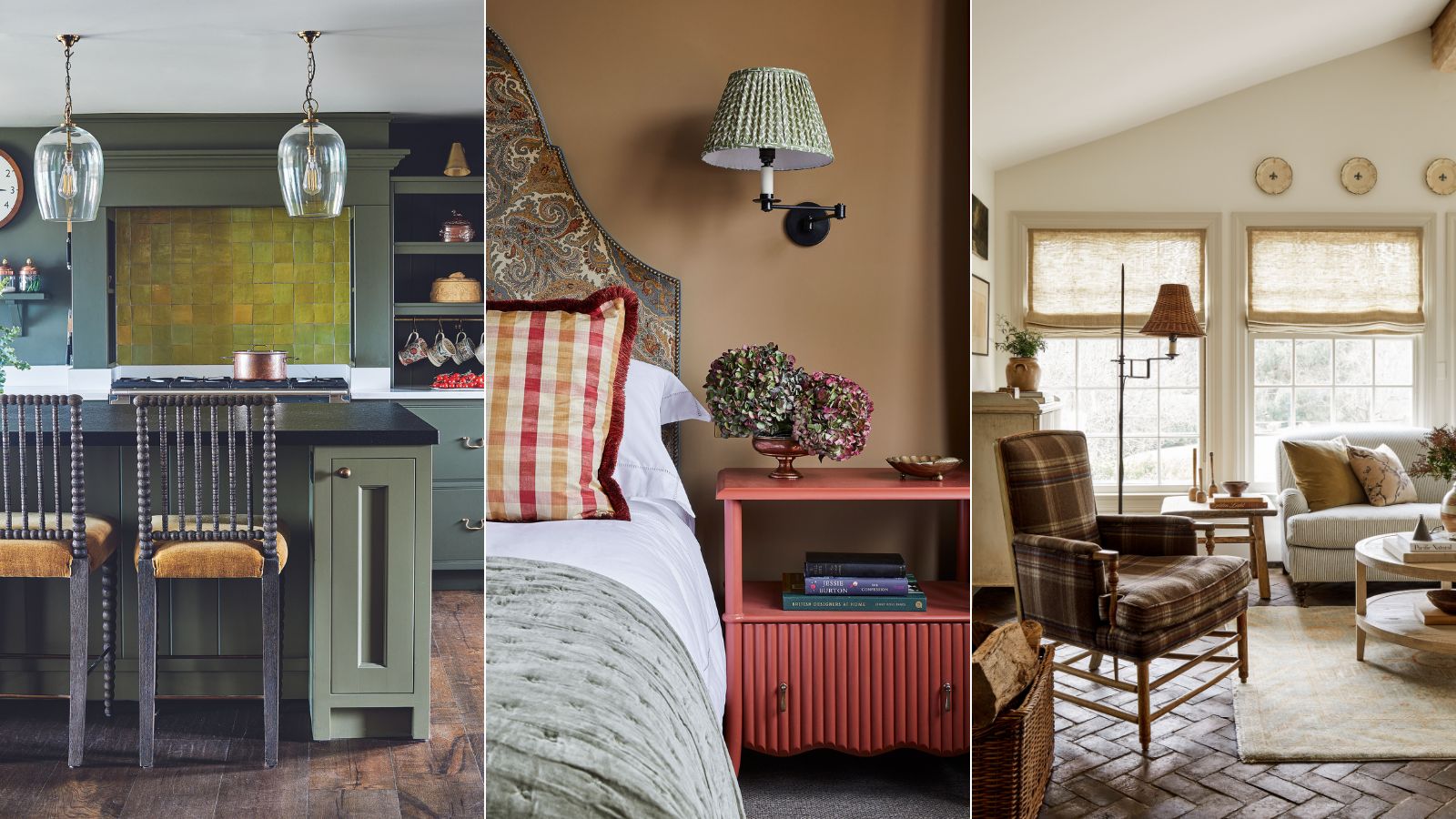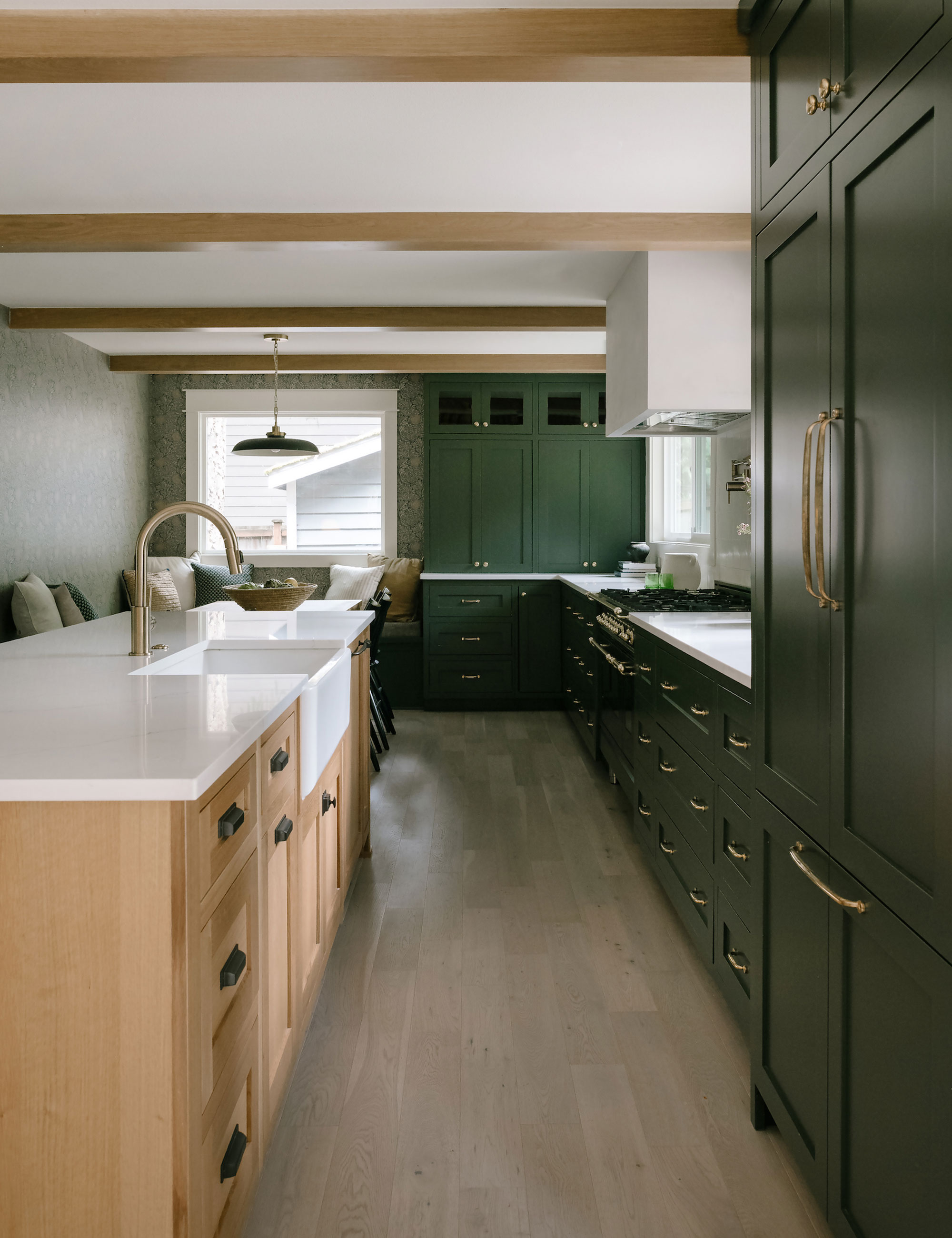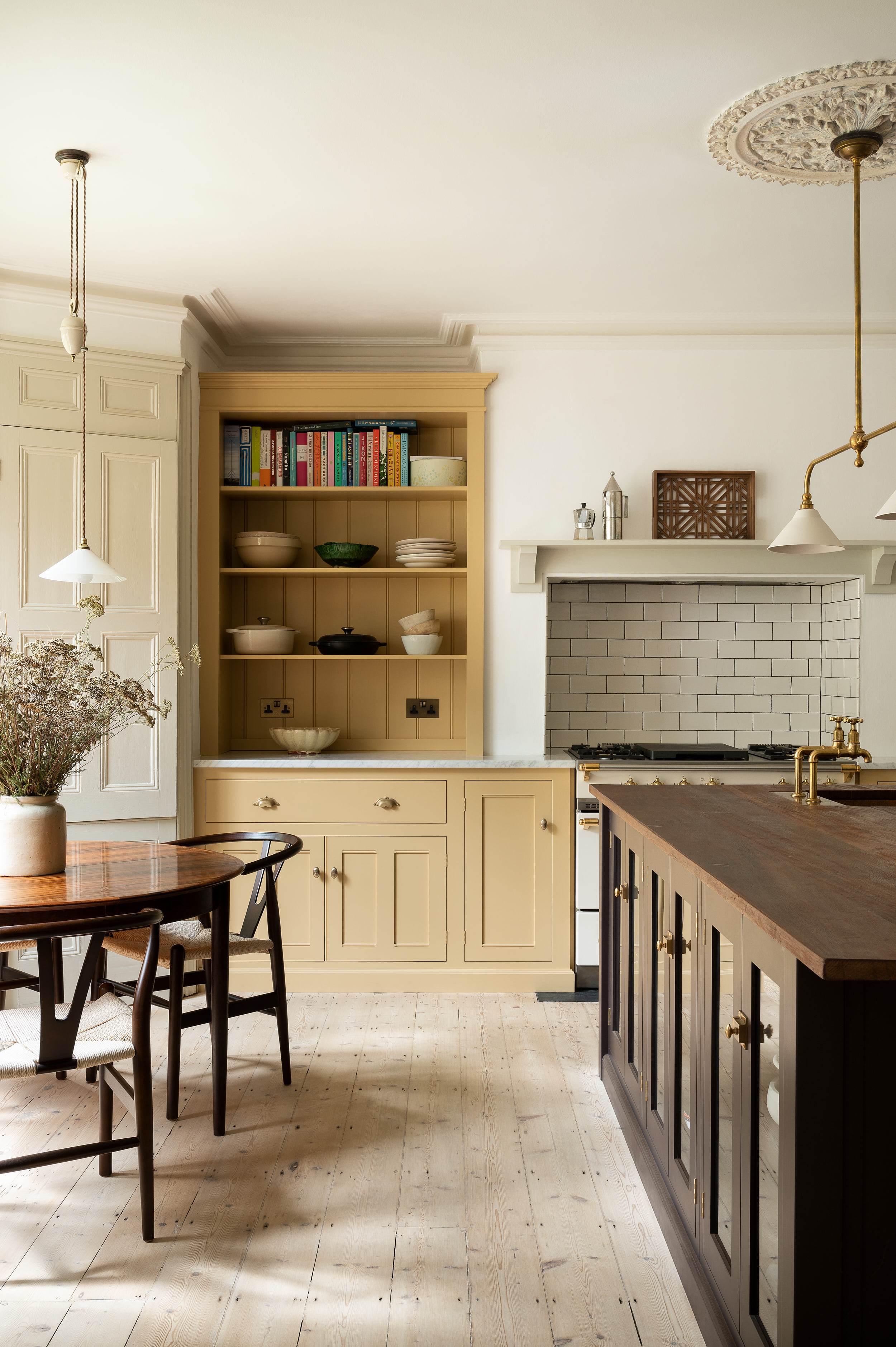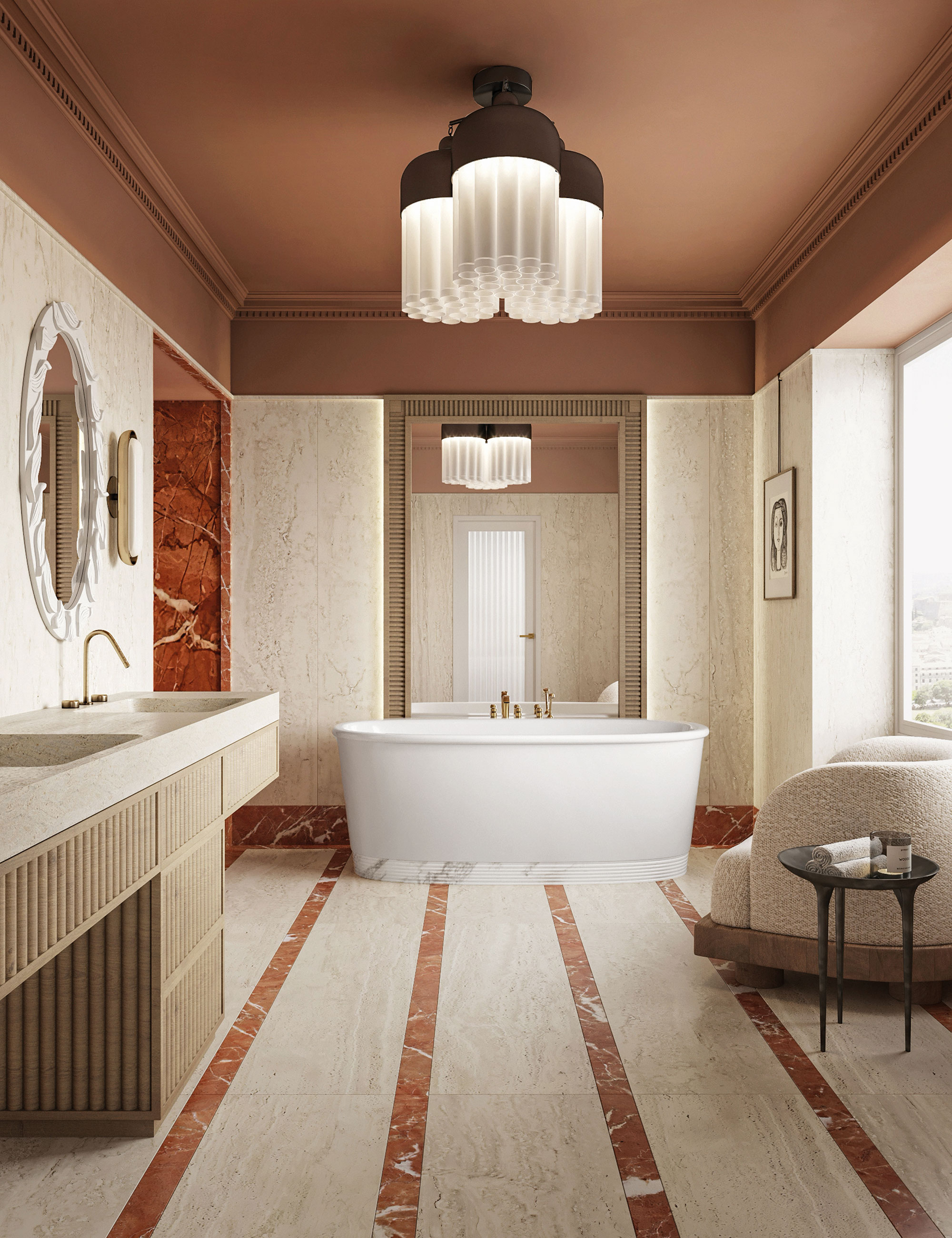What colors make a house look expensive? 6 hues designers say will give your home a five-star facelift
Making a house look expensive using clever color choices is a design goal everyone wants to achieve. We spoke to a few of our favorite interiors people to find out their color secrets


There is a multitude of interior design elements to consider when you're redecorating your home, but few are as important as your chosen room colors. The right color doesn't just have the power to upgrade a space with personality and create a long-lasting impression; it can also make a room look more expensive and refined, which is a big win when you're decorating on a smaller budget.
Here, designers, decorators, and experts reveal how to approach choosing room color ideas to make a house look expensive, from using the color wheel to create strong color combinations to using accent shades that sing and timeless neutrals.
What colors make a house look expensive?
Color is one of the easiest ways to create a visual story in your home. Creating a luxurious and expensive-looking house using color should be a multisensory experience; a visual masterpiece that still maintains the liveability that you desire.
Made for Living: Collected Interiors for All Sorts of Styles, Amber Lewis | From $24.58 at Amazon
This national best-seller is a success for a reason: within the pages, interior designer Amber Lewis shares her most loved design secrets and know-how.
1. Embrace the quiet beauty of beige

It's fair to say that at Homes & Gardens, we've been championing vivid interior schemes and bold decorating ideas for some time, but a neutral backdrop can enable beautiful architecture, decorative furniture, and bespoke artwork to make a true style statement within your home. Sophisticated and timeless in their simplicity, beige room ideas are a stalwart in the world of interiors. The soft neutral – we love it for its quiet beauty and versatility – get it right, and it's a failsafe way to make a house look more expensive.
Using a white or natural palette is all about adding depth and contrast in different layers and textures, says Jane Landino, creative head of the studio at Taylor Howes. ‘To make a neutral palette feel designed, considered, and luxurious it’s important to mix and match patterns, albeit neutral ones, and occasional bursts of color.
For Becca Casey, founder of Becca Interiors, beige instantly brings gravitas. 'Beige represents purity, innocence, and new beginnings, as well as cleanliness and clarity. It can be used everywhere in the home but is very successful in any room where you want to create order and with little distraction. It is also an ideal foil for a well-curated room of art and furniture.’
'I gravitate towards natural palettes, and materials too, as for me they bring a certain longevity and luxuriousness to design,' she adds.
Design expertise in your inbox – from inspiring decorating ideas and beautiful celebrity homes to practical gardening advice and shopping round-ups.

Owner and principal designer Becca Casey grew up in the English countryside, before eventually moving to the other side of the Atlantic and launching her design career in New York City. Currently based in Connecticut where she leads her interior design firm, Becca brings her style – rooted in the UK – to homes across the US.
2. Add impact with contrasting color

The addition of an accent color is a quick and easy way to transform a space, define an area, or highlight architectural elements, believes Ruth Mottershead of Little Greene. ‘If you’re lucky enough to have wonderful architectural details such as archways, moldings, or picture rails in your home, paint is the perfect way to highlight them to create a design detail.'
A simple pop of contrasting color on a door or skirting is a great way to add impact and an element of surprise to an otherwise muted scheme. This popular color trend will not only make a space feel considered and curated, but also expensive and luxurious.
Finally, says the American decorator Cortney Bishop, don’t be afraid to bring in an accent color to unexpected places. ‘Consider applying a lively hue to a bathroom vanity unit or painting your interior doors or trim with a contrasting color that makes your walls stand out even more,’ suggests Cortney. ‘The transition and break in color will be more welcoming than you might think when transitioning between rooms.'
3. Be inspired by nature with an earthy green

Botanical tones work with most shades to create rooms that are harmonious and easy to live with. Green is in general a heritage, calming and relaxing color. Being the color that represents nature, it’s one that makes us feel good and positive.
‘The poet and philosopher Goethe used to describe green as a useful color, a good color to have around,’ explains Francesca Wezel, founder of Francesca’s Paints. ‘Dark green is often used in traditional gentlemen’s clubs and libraries, it goes well with wood, and is a color that stimulates concentration and deep thinking.'
‘This is a wonderful color that works well all through the year and is ideal if you are trying to bring an element of nature or heritage feel into a more contemporary city home,' says Emma Sims-Hilditch, founder and creative director, Sims Hilditch. 'It’s an expensive-looking, restful, and calming shade which not only works well on cabinetry but also looks great on walls.’
4. Adopt a heritage yellow

Embrace the warmth and mood-boosting power of sunny tones for a happy, vibrant feel. There is an air of heritage and nostalgia with yellow that makes a house look expensive.
At the lighter, bolder end of the spectrum, yellow is a color of optimism. ‘Yellow can create a mellow and uplifting interior all at the same time. It transports us back to long lazy sun-drenched days in the Mediterranean and it can brighten us up on gloomy days,’ says Martin Waller of global design brand Andrew Martin.
But yellow can be a tricky color to master, says Mike Fisher, creative director and founder of Studio Indigo. ‘In particular, bright primary yellow, as it can be quite harsh and childlike within an interior despite its sunny, positive connotations.’ He likes to use darker yet richer fall versions of yellows in an ochre or saffron hue which work well with petrol blues and purples.
If you want to curate an expensive space, look to a range of yellowish colors which have a depth to them: they work well in bright, south-facing rooms where they can turn the air into something tangible and edible, while on a dull day they can add a sense of cheerfulness. A brighter yellow could be paired with splashes of green or orange.
5. Go for a strong, confident red

One of the most passionate and life-enhancing colors to use in a decorating scheme, red rooms offer a luxurious bank of positive energy.
Historically, red has associations with wealth and status. In the 17th century, flashes of red dye were used on the soles of shoes worn by aristocratic courtiers to Louis XIV, while the use of a VIP red carpet goes back to Ancient Greece. Perhaps a present-day example of this might be the eye-catching interior design trend of using red in high gloss or lacquered finishes on woodwork.
‘We have been using red to decorate the walls of our homes from the beginning of human existence,’ explains Marianne Shillingford, creative director of Dulux. ‘We find red on the walls of the earliest cave dwellers and red pigment was used in Neanderthal burials as a symbol of life. It has the longest visual wavelength of any color, making it the most impactful. It is famous for stimulating the appetite, good conversation, and love, making it an enduring favorite in the dining room and the bedroom,’ she continues.
Color-drenching a room with red walls and matching upholstery offers a fully immersive effect. In contrast, dialing down the red percentage to a discreet trim on white bedlinen or to the leading edge of a curtain can be equally as thrilling. ‘When using red in a color scheme, it’s best to choose shades that are rich and warm rather than loud and insistent. Maroon, burgundy, and rosehip work brilliantly with shades of green, while deep pinky-reds are very adaptable and blend well with khaki or stone. Dark reds pair best with gold metallic touches and carry a degree of heritage, especially when mixed with dark wood,’ says Simon Temprell, head of interior design at Neptune.
6. Reintroduce brown to your home

Decorating with brown is having a renaissance. This confident hue looks delicious as an all-over color, especially if you want to make a house look expensive.
‘Tell someone you are painting a room brown and watch them recoil in horror. However, this much-maligned color is a great choice for expensive-looking interiors,' says Sarah Brown, director, of Sarah Brown Interiors.
The nuances of brown are often underplayed but one look at this brown living room shows how complex and interesting the shade can be. Deeper than ochre and earthier than gold, this rich yet understated tone strikes a refined note in the living room. In north-facing rooms, it will create a cocooning field, and in brighter spaces, it allows the opportunity to layer other shades of brown for more impact.
FAQs
How do you pick the perfect house colors?
Picking the perfect house colors in a room can be a tricky business. Even with all their experience, it can take time for professionals to make a decision. There is a lot to consider – the size and shape of the space, the available natural light, its direction, who it is for, etc. ‘A large space can often handle a blanket of color that works with both north- and south-facing light,’ says Tom Morris of Morris Studio. ‘If wall colors are strong, I tone down the colors in the furnishings or vice versa.’
The contemporary home is all about layerism – whether that’s tonal variations of color on different surfaces, a mix of patterns that playfully explore a particular palette, or a dynamic blend of textures. Two or three variations of each is enough to develop a richly pleasing space that is the last thing you see at night and the first thing the next day.
Another favored choice for designer is taupe. Reminiscent of velvety cocoa, a mid-brown taupe is a striking color for any room. Depending on the furniture and accent colors introduced alongside, it has the flexibility to range from looking neat and tailored to soft and welcoming.
‘For me, neutrals such as taupe are grounding wall colors,' says Henriette Von Stockhausen, creative director, of VSP Interiors. 'It’s important to remember that sometimes a classic and expensive-looking interior is just the ticket: calm colors, gentle schemes, traditional furniture, and antiques – no pattern clashes, no huge color pops, just comfort and a quiet space to relax in.'

Jennifer is the Digital Editor at Homes & Gardens, bringing years of interiors experience across the US and UK. She has worked with leading publications, blending expertise in PR, marketing, social media, commercial strategy, and e-commerce. Jennifer has covered every corner of the home – curating projects from top interior designers, sourcing celebrity properties, reviewing appliances, and delivering timely news. Now, she channels her digital skills into shaping the world’s leading interiors website.
